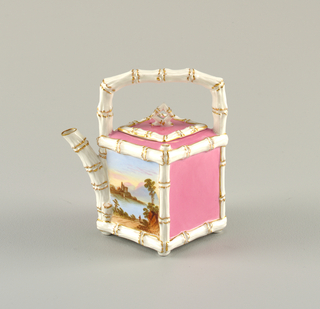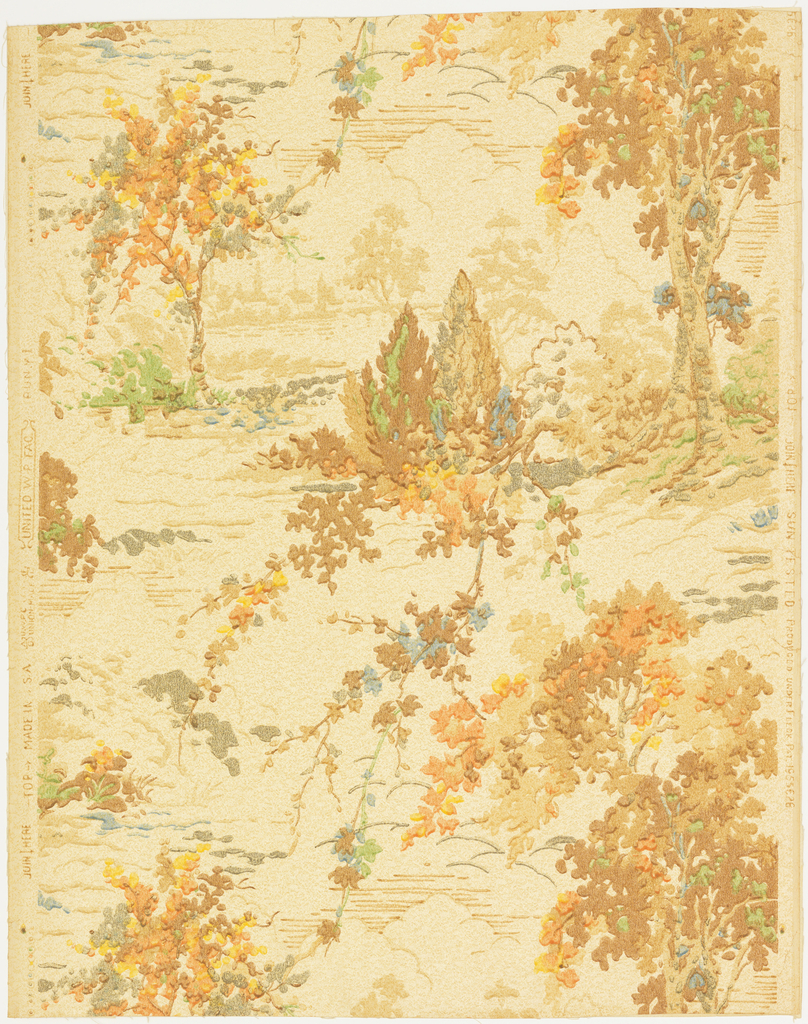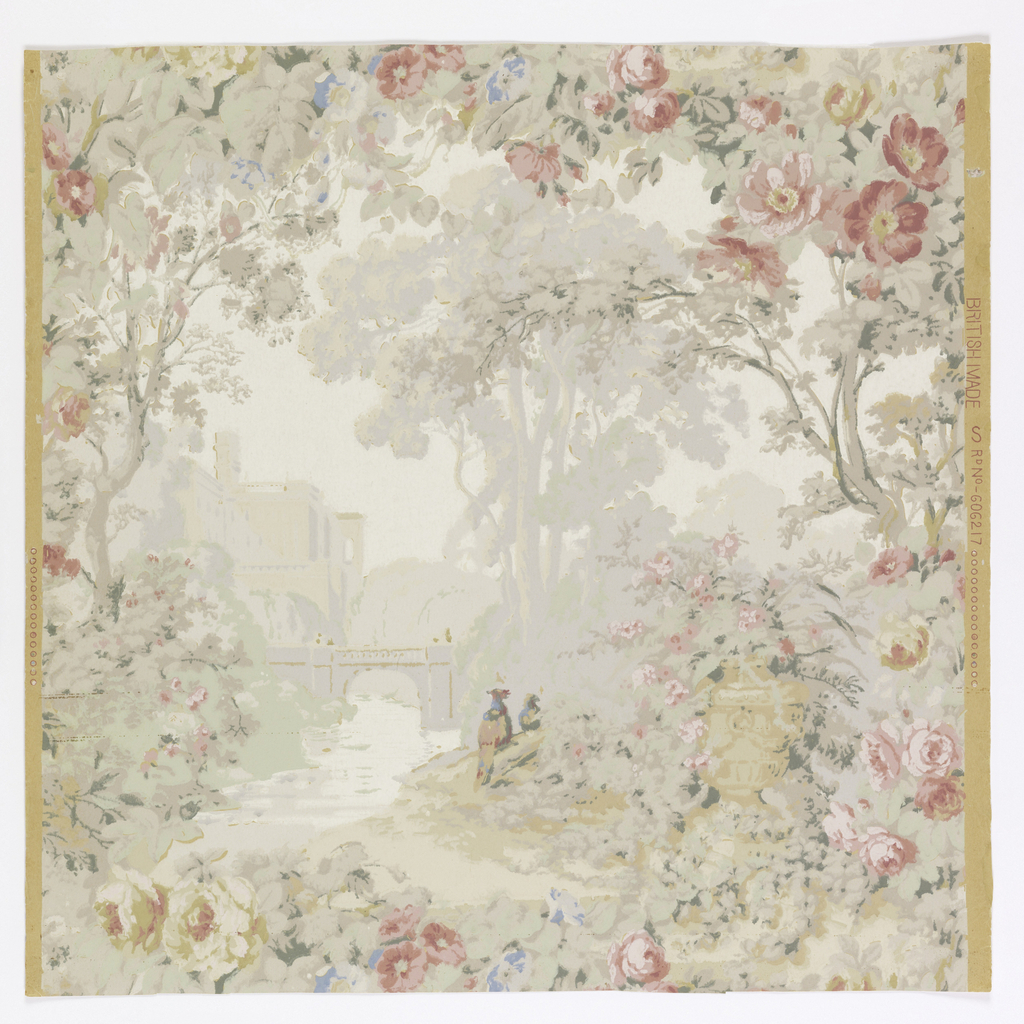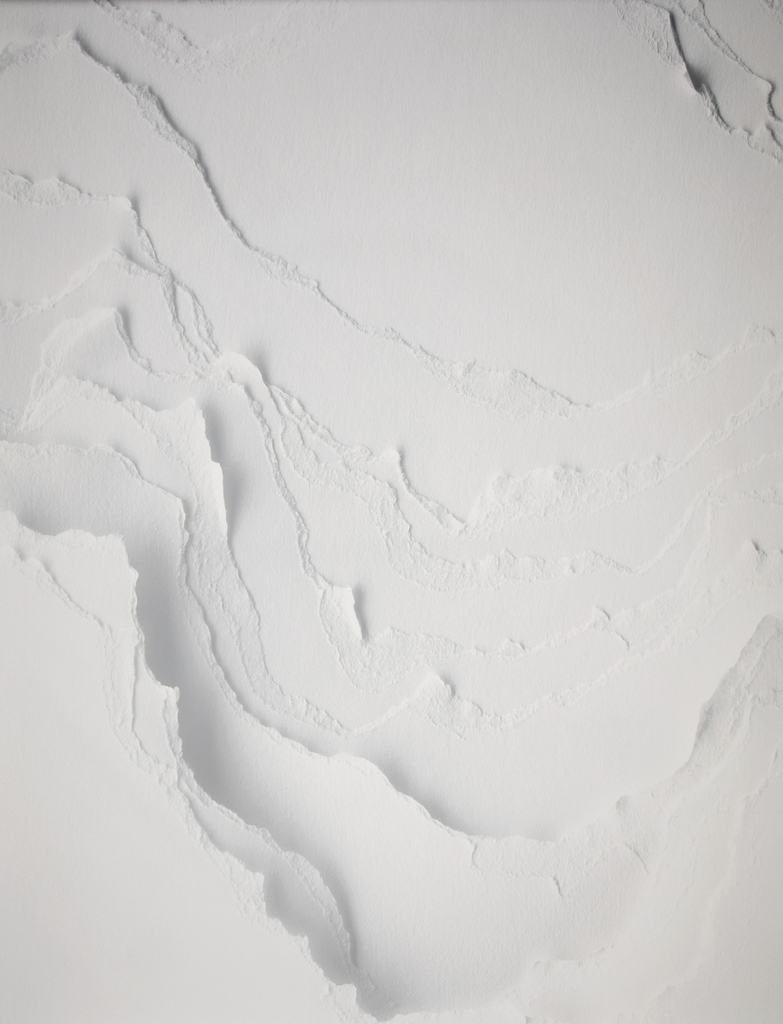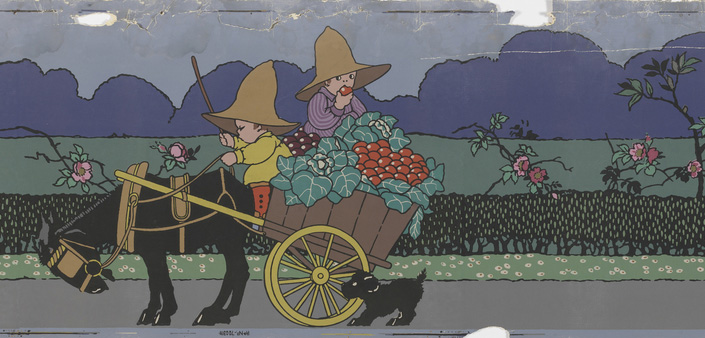Author: Zenia Malmer To the modern eye, this 19th century teapot, made by Edwin James Drew Bodley, who was in charge of an English china and earthenware manufacturer in Staffordshire, might border on kitsch. The spout, handle and edges are decorated with moulded bamboo stalks, with gilding to accentuate their nodes. Bright pink panels feature...
Walking through Central Park I enjoyed seeing all the brightly colored leaves in the trees, while the fallen leaves crunched underfoot. I thought this wallpaper with its warm colors and hints of green seemed to beautifully capture the essence of the fall day. This is a fairly stylized landscape scene which includes trees, vines, and...
Scenic wallpapers originated in the early years of the nineteenth century, and found a renewed popularity during the Colonial Revival movement in the early twentieth century. Many new designs in scenic papers and murals were introduced mid-century following World War II, and scenic papers did actually serve a purpose in these new homes as the...
Wrapped in a warm summer haze, a pair of birds, at the center of the composition, overlook a flowing stream surrounded by a flower filled landscape. The famed Windsor Castle idly appears in the background, surveying the quiet scene below. Hushed yellows and greys, in addition to the creamy white background, create an almost ethereal...
Topographies dazzles our eyes and walls with a trompe l’oeil effect that successfully tricks our senses—the seemingly three-dimensional surface is deceptively flat. To create the pattern, designers stacked multiple sheets of paper and tore away portions of the surface by hand, forming canyon-like valleys of various widths and depths. The wallcovering’s name refers to the...
In celebration of Women’s History Month, March Object of the Day posts highlight women designers in the collection. This wallpaper delights with its lively motifs of birds and plants and playful stylization. The bright colors and presence of nature injects an otherwise strongly geometric and simplified rendition of an urban landscape with a cheerful energy....
This paper has a decidedly modern look with the minimalist landscape seen through the arch. The view is bordering on surreal, centering on the ruins of a colonnade, with strong horizontal shadows going off to the right. Two trees are seen in the distance, with a flock of gulls or pigeons, which I initially thought...
I was scrolling through some images and came across this bandbox fragment. This appears to be about half of the side panel of a box which has been flattened and probably framed at some point. This is a specially printed bandbox paper illustrating a battle or conflict of some sort, though I’m having trouble identifying...
I have long admired the wide children’s borders, also called friezes, designed and produced in the early twentieth century, prior to the Great Depression in 1929. Cooper Hewitt has a fair collection of these with the most popular being Winnie the Pooh, produced ca. 1926, coinciding with the release of the book by A.A. Milne...
